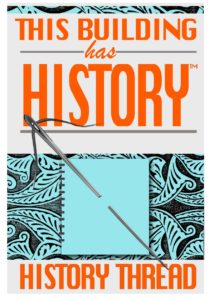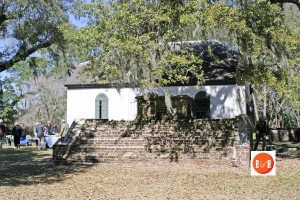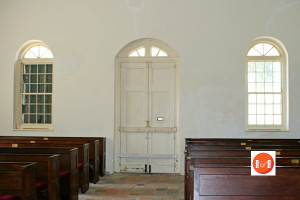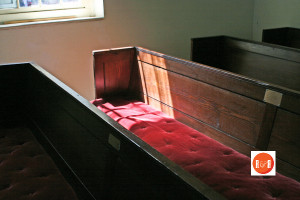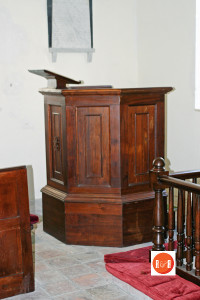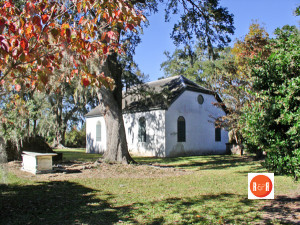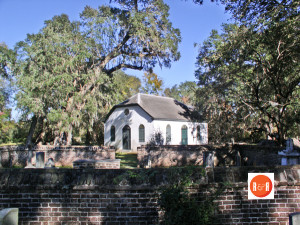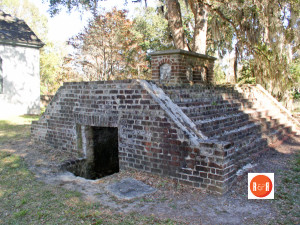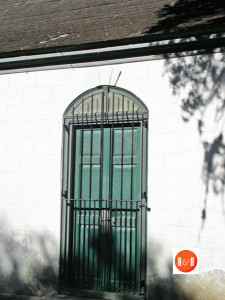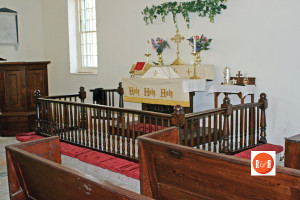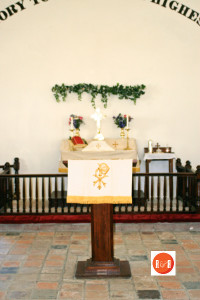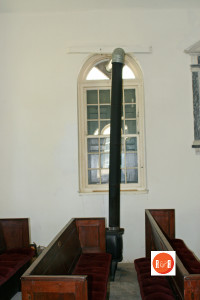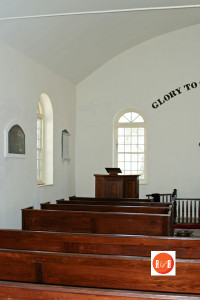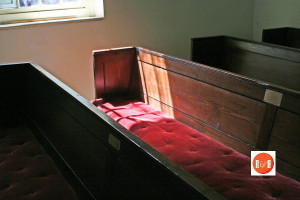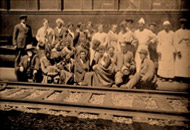Comingtree Road, Rice Hope, S.C.
City Directories and History: Childsbury, one of the early towns to be laid out in South Carolina (1707), is significant as an important archaeological site. Englishman started a ferry here as it was the only practical ferry site across the Cooper River within a reasonable distance. Property was designated for a college, a free school, a house for the schoolmaster, a place of worship, and a market square. To the inhabitants of Childsbury, Child gave 600 acres to farm and pasture. He also gave them the 100-acre hill by the river to build upon as a citadel to protect the town in times of war. Due mainly to the rise of the new and growing plantations, Childsbury began a rapid decline and the town site eventually became part of a plantation. Strawberry Chapel is the only visible remains of the town of Childsbury. Architecturally the chapel displays the
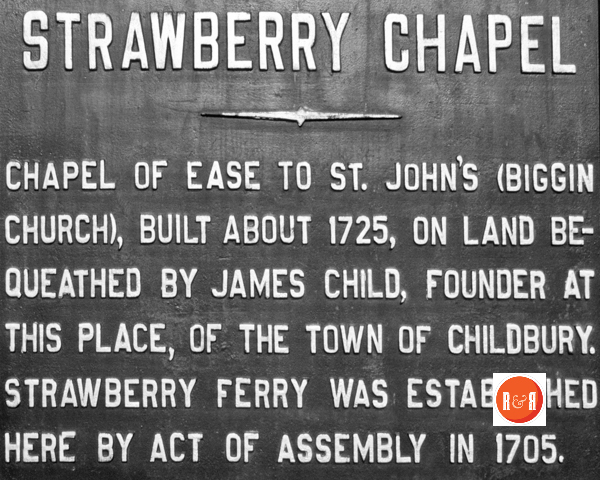
simple, yet dignified and impressive lifestyle of a Chapel of Ease. This one story rectangular brick building has an unadorned hipped gable roof. The double three paneled door of the façade, surmounted by flush fanlight is symmetrically situated between two shuttered windows of the same three panel design. These chapels were built to serve the people for whom the regular parish church was inaccessible. Strawberry Chapel became unique as a Chapel of Ease in that it is operated as a full parish church. Usually these chapels were denied some of the privileges of a parish church. A small cemetery is adjacent to the chapel. Listed in the National Register April 26, 1972. [Courtesy of the SC Dept. of Archives and History]
Strawberry Chapel, built in 1725, “stands among the graves of two centuries on a little eminence among the live oaks and pines and is in good order … It was called in 1725 a Parochial Chapel of Ease at Childsbury, but has been Strawberry Chapel for many years.” James Child, the founder of Childsbury, willed to his son Isaac the right to the grazing and the trees in the churchyard for as long as he kept it “weeded and clean from hogs digging.” Mrs. Arthur Gordon Rose’s book, Little Mistress Chicken, tells of an interesting but tragic family incident with this churchyard as its setting, during the time that Childsbury was still extant. Strawberry Chapel survived both the Revolution and the Civil War, though the communion silver was buried and lost during the latter and not recovered until 1946.
In 1854 the words, “Glory to God in the Highest,” were put over the altar on the wall at the front of Strawberry Chapel. This inscription is particularly interesting in that it is a most finished work of art and made of small pieces of the large cones of the long-leaf pine. These were sewed down on cardboard letters about ten inches high, which had been cut out by Colonel Ferguson of Dockon. Each piece of cone was fitted above the other until the letters were completely covered; they were then shellacked and arranged on the wall. This work was done by Mrs. James Ferguson, her daughter Frances, and the Ladies of the Chapel; It also survived the earthquake of 1886, but was badly shaken. At that time the slave gallery was taken off the weakened walls and is now in the Negro church known as Taveau Church on the River Road from Wadboo Bridge to Strawberry.
One of the most interesting chapels of ease and most enduring was Strawberry at Childsbury on the Cooper River, near Strawberry Ferry from which it took its name. The town had been laid out on the western branch of the Cooper River by James Child. The village of Childsbury is no more, but Strawberry Chapel of the Lower Beat of St. John’s Parish has survived and services are still held here on special occasions.
(Information from: Names in South Carolina by C.H. Neuffer, Published by the S.C. Dept. of English, USC)
Also: Strawberry Community seems to have started as a railroad station on the Atlantic Coastline Railroad. In 1940 this community boasted, besides the station, a Post Office, a saw mill, two stores and five houses. Shortly thereafter, the saw mill went out of business, followed by the Post Office and the railroad station. There were only two white families living there in 1962. It takes its name from the old Strawberry Plantation near this same railroad station. The people at 22 Mile, at one time considered to be part of Strawberry, erroneously make this Strawberry a part of the Strawberry Plantation on the Cooper River where James Child established the Town of Childbury. Strawberry is located on the crossing of the Atlantic Coastline Railroad by State Highway 9, two miles due north of the 22 Mile community.
Stay Connected
Explore history, houses, and stories across S.C. Your membership provides you with updates on regional topics, information on historic research, preservation, and monthly feature articles. But remember R&R wants to hear from you and assist in preserving your own family genealogy and memorabilia.
Visit the Southern Queries – Forum to receive assistance in answering questions, discuss genealogy, and enjoy exploring preservation topics with other members. Also listed are several history and genealogical researchers for hire.
User comments welcome — post at the bottom of this page.
R&R HISTORY LINK: TEXT – NR NOMINATION
Please enjoy this structure and all those listed in Roots and Recall. But remember each is private property. So view them from a distance or from a public area such as the sidewalk or public road.
Do you have information to share and preserve? Family, school, church, or other older photos and stories are welcome. Send them digitally through the “Share Your Story” link, so they too might be posted on Roots and Recall.
Thanks!
IMAGE GALLERY via photographer Bill Segars – 2004
